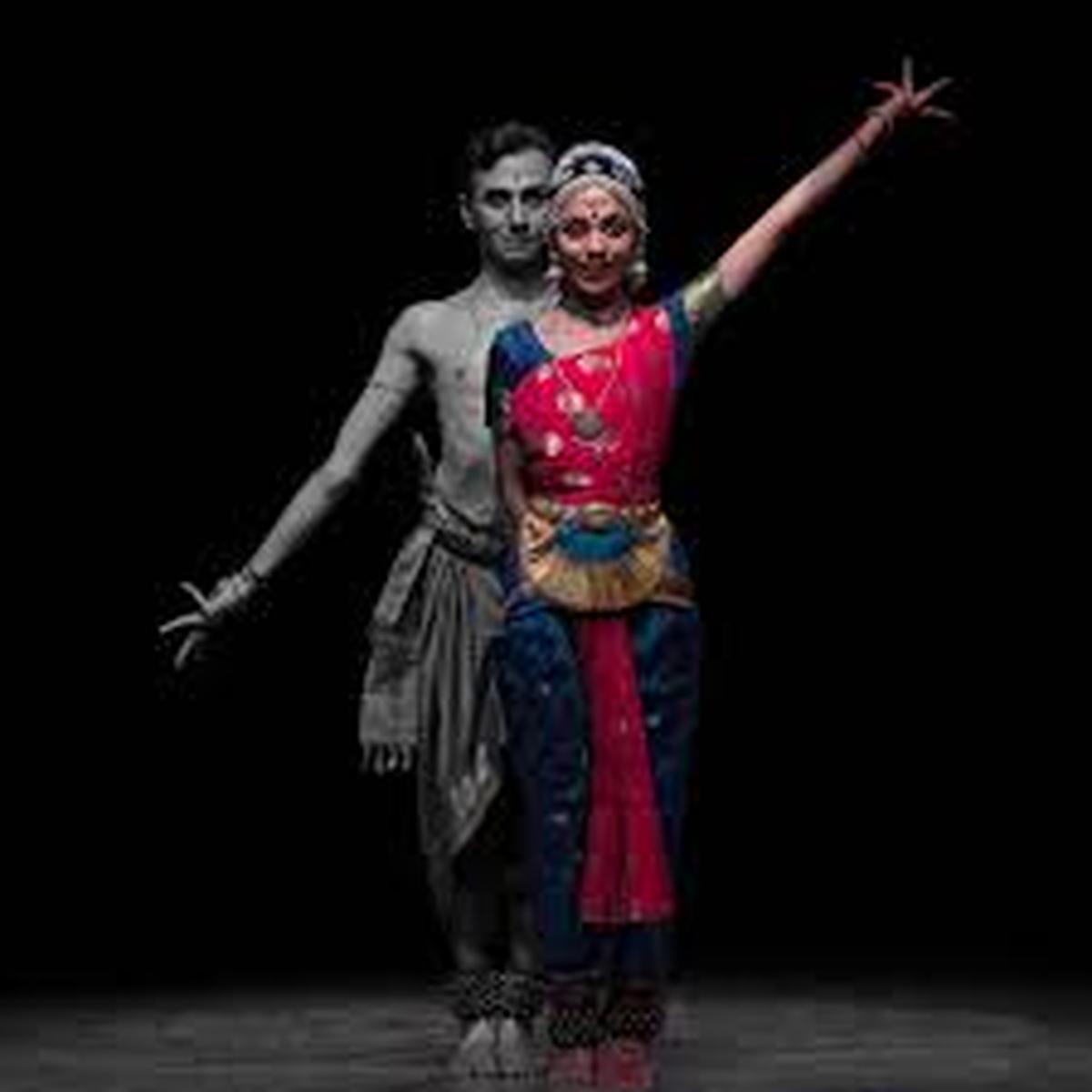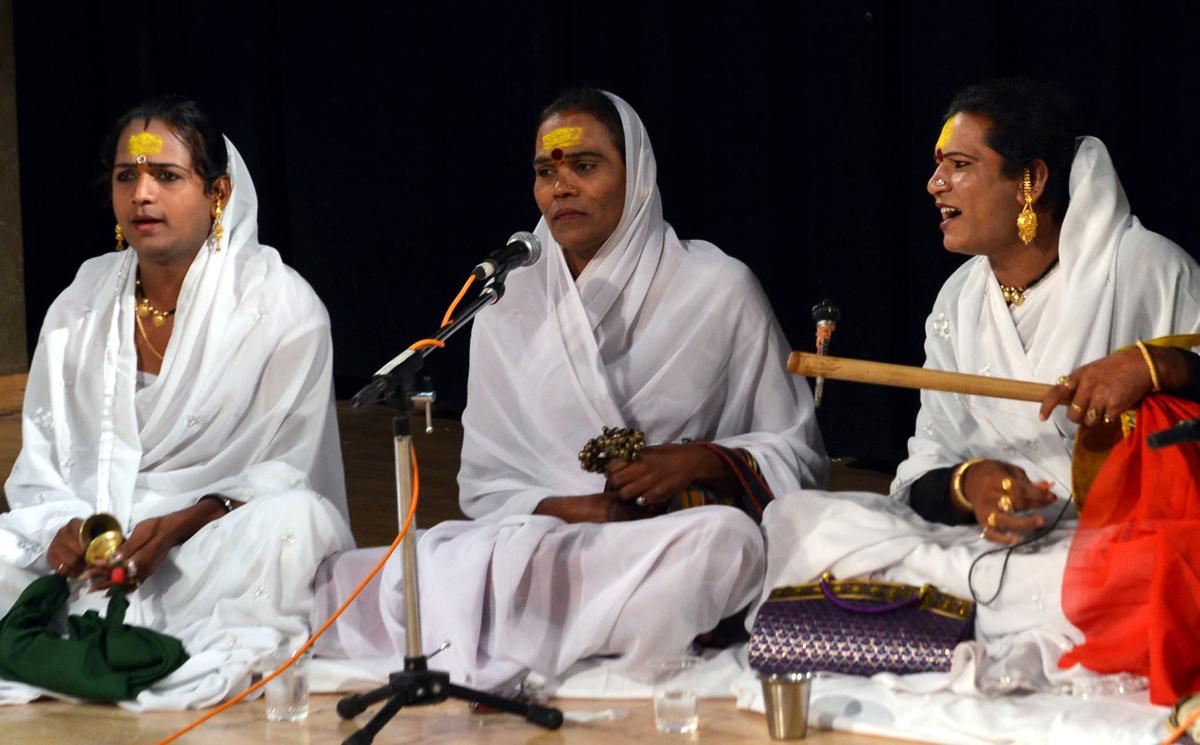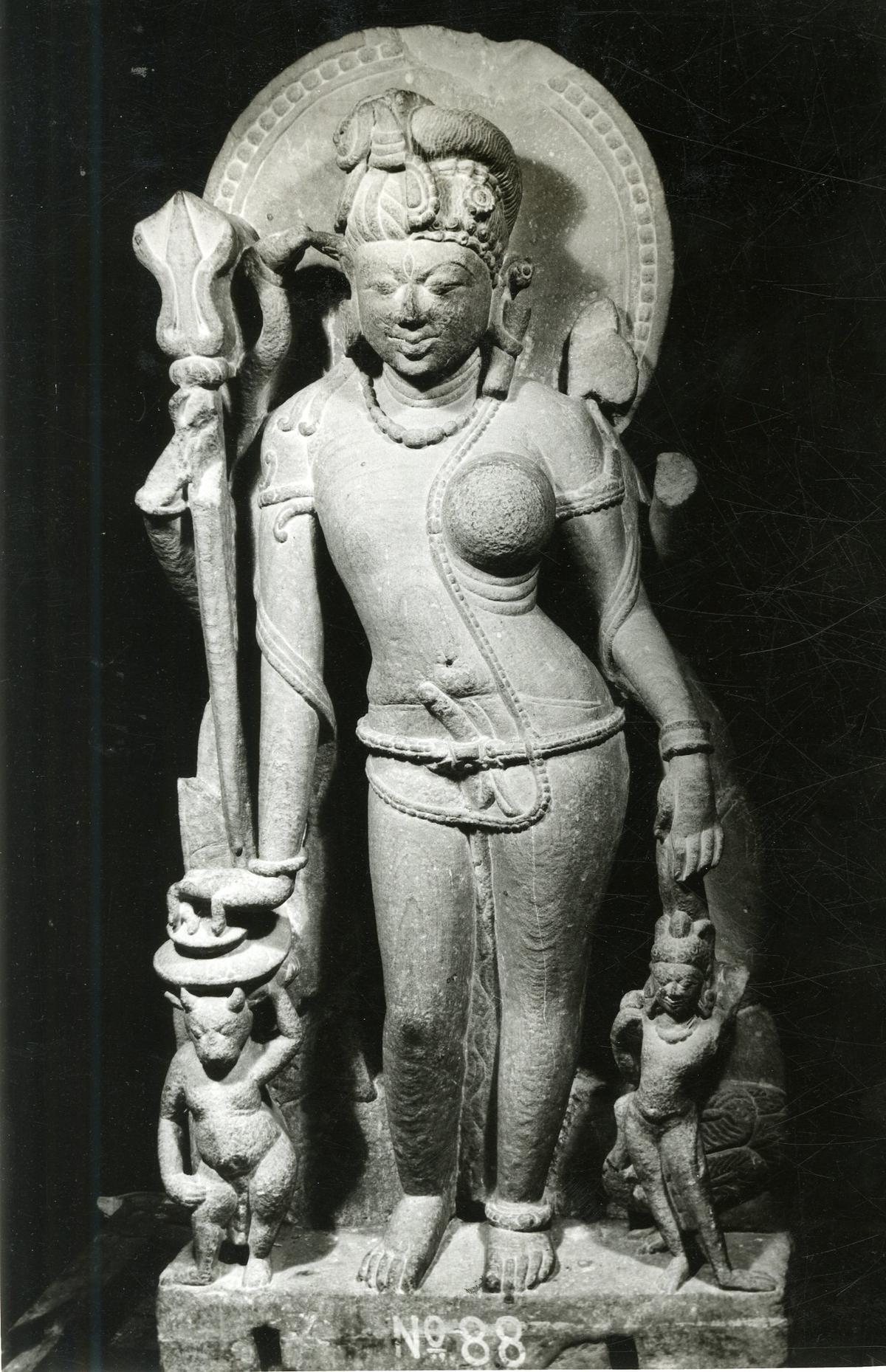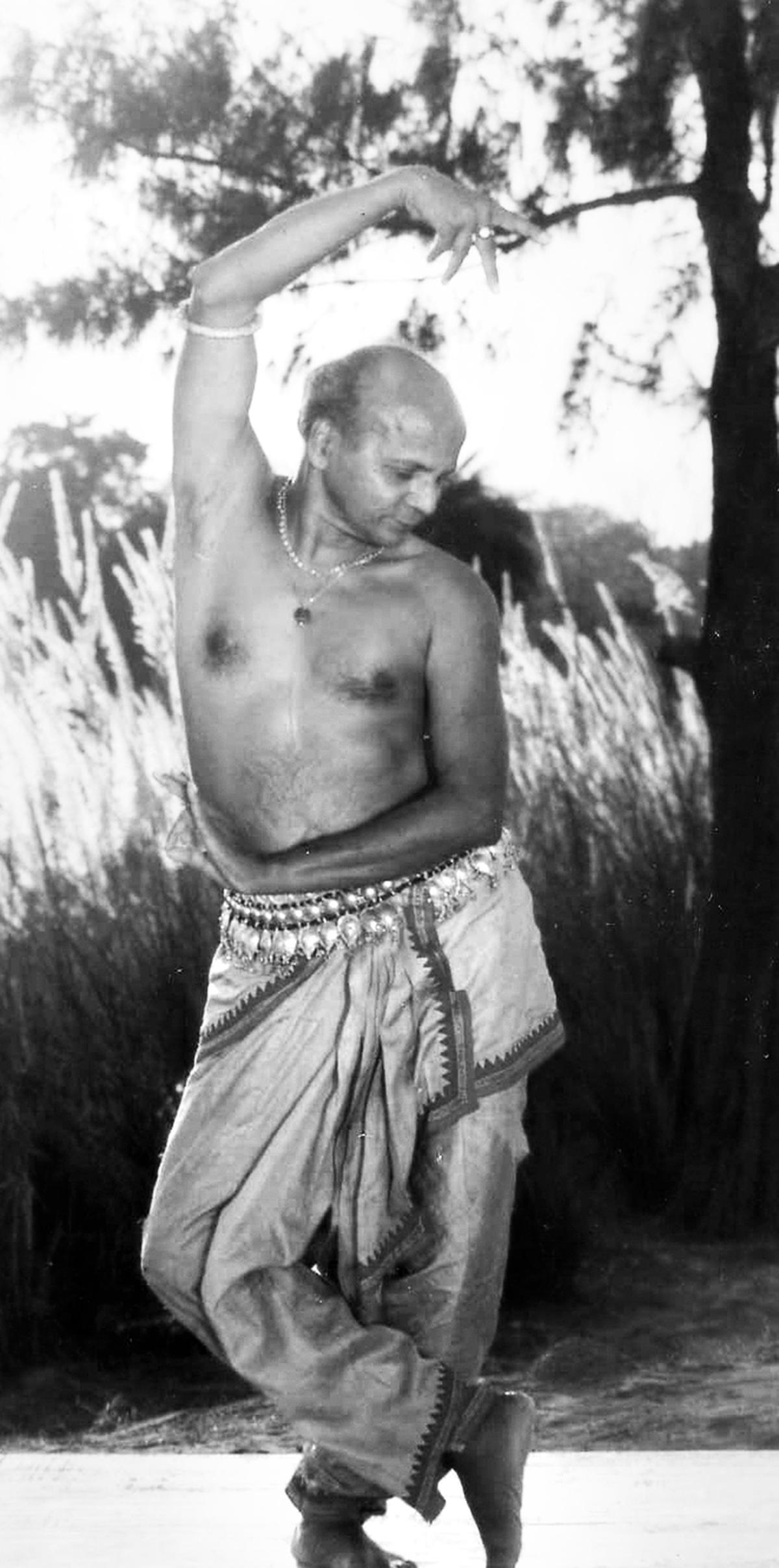A work by Raja Ravi Varma depicting Ardhanarishvara | Photo Credit: Special Arrangement
It stands behind a glass case on a revolving platform in the centre of the Egmore Museum Bronze Gallery. Perfect proportions, rhythmic curves on one side and graceful, well-defined lines on the other. Should Ardhanarishvara represent the difference between man and woman? Or should it represent equality?
The answer lies a little deeper, in queer communities who worship Ardhanarishvara as a symbol of liminal sexuality. The god is neither male nor female, and falls on a spectrum in Hinduism that only a few mainstream figures can claim. While dancers have interpreted and reinterpreted the idol (most popularly through the works of Dikshitar and Shankaracharya) can classical dance lay claim to an understanding or exploration of the queer experience?

Bharatanatyam artist Praveen Kumar with his disciple Divya Hoskare performing Ardhanarishvara | Photo Credit: Courtesy: Simhaz Photography
Recently, dance has expanded its approach to mythological subject matter by highlighting queer characters, and using many stories from our rich literary tradition that showcase a pre-colonial Indian perspective on the matter. Productions such as Harikrishnan’s ‘When Shiva Kissed Vishnu’ and Himanshu Srivastava’s portrayal of Shikhandi use traditional choreographic skills with modern sensibility to address the subject of queer experience. Yet, it seems that much of the LGBTQ+ content is considered taboo among classical musicians and dancers. It’s almost as if some self-appointed patrons of the arts consider queerness to be foreign to India and especially to dance and music.
Does India have inherently queer performance traditions?

India has indigenous trans communities with their own distinctive performance traditions, such as the Jogappas of Karnataka. | Photo credit: Bhagya Prakash
Most geographic regions of India have indigenous trans communities with distinctive performance traditions, such as Jogappa of Karnataka. Some of these traditions are ancient and well embedded in the cultural fabric of the region they represent, raising the question of whether the stigma associated with homosexuality is limited to the classical realm alone.
To find the answer, we have to go back in time. Apart from many mythological stories, sociological texts such as the Kama Sutra openly mention homosexual relationships. Similarly, we have evidence of trans performers in the royal courts of South India, who often served as interlocutors for the professional dancers. These figures were extremely important as they moved freely in the palaces, passing through places forbidden to women to the king’s private chambers and carrying with them exceptional musical and mimicry abilities as well as sensitive information.

Ardhanarishvara statue in Jhalawar, Rajasthan | Photo courtesy: The Hindu Archives
It is easy to find visual representations of the LGBTQ+ community in sacred architecture. From Khajuraho in Madhya Pradesh to Odisha, all sorts of queer social and sexual activities are depicted on the walls of our temples, with some sculptures dating back 1000 years or more. The Madurai Meenakshi temple has a beautiful sculpture of a figure with breasts, a beard and a moustache, believed by scholars to be a depiction of Brihannala. The diversity in depictions of queerness spans across geographic regions, cultures and media – including painting, sculpture, music and dance.
Moreover, similar diversity of views is seen in the literature as well. There has been much debate as to whether there is sexuality in Kshetrayya’s open love for her master Muvvagopala. Similarly, a closer study of the matter reveals whether there is sexuality in Kshetrayya’s open love for her master Muvvagopala. Thiruvasagam Extremely detailed, romantic descriptions of Shiva emerge, giving Manikkavasagar’s voice an air of eccentricity. While more orthodox scholars dismiss these descriptions as the author “impersonating” a woman as a literary device, the descriptions are so detailed that one is compelled to explore all the explanations for this writing style.

Guru Kelucharan Mohapatra portrays a beautiful Radha. There is scope for multiple identities within the tradition. | Photo courtesy: The Hindu Archives
In dance imitation, we don’t blink when Pandit Birju Maharaj or Pandit Kelucharan Mohapatra depict a beautiful, hyper-feminine Radha or Priyadarshini Govinda portrays Rama as a handsome warrior. There is scope within the tradition to take on multiple identities and become a medium for genders – a reality that is also reflected in the cross dressing lila-hava depictions of Krishna and Radha in North Indian painting.
With forms that are so expressive and flexible, it is no surprise that many gay dancers and musicians use their classical practice to establish a deeper connection with their identity and find their voice. Some of the earliest pieces that started the conversation around homosexuality and the classical space came through internet platforms – notably Indian Ragas (“Revelations”) and the work of Patruni Chidananda Sastry. It is no wonder that proscenium stages in Chennai are still hesitant to showcase the subject. When gay dancers themselves struggle for acceptance, how can we expect the subject of homosexuality to be acknowledged explicitly in the arts?
Perhaps the answer lies in looking to the past, when our sensibilities were not influenced by Victorian ideals, to a society that created the image of the Ardhanarishvara – neither man, nor woman, but both together.